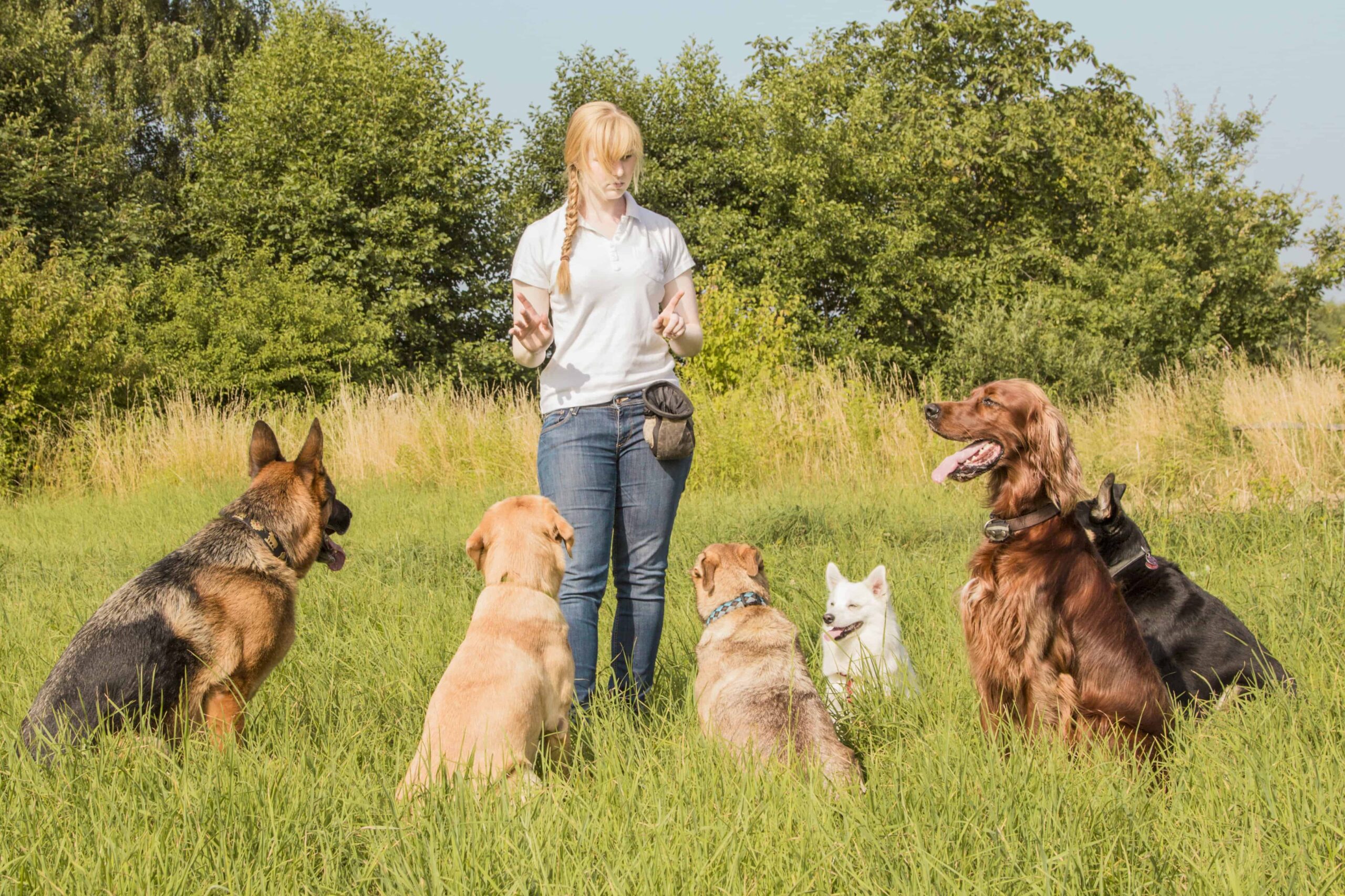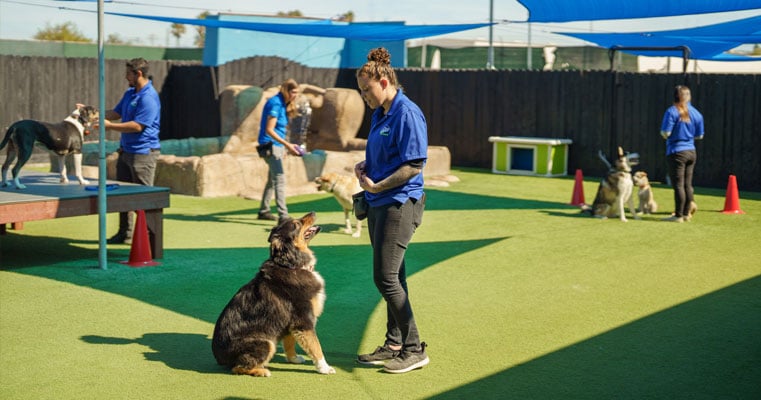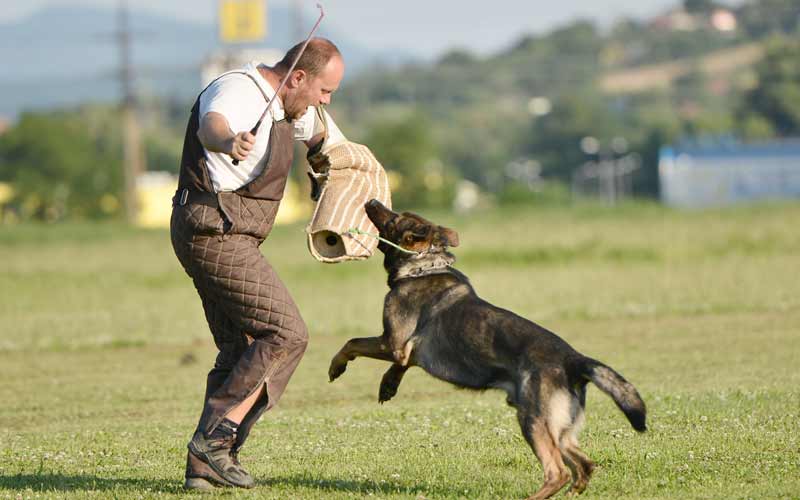Just how to Choose the Right Technique for Effective Dog Training
Vital Tips for Successful Dog Training: An Overview for Pet Dog Owners
Effective canine training is a complex procedure that calls for a calculated approach tailored to both the pet's temperament and the owner's goals. Key components such as establishing regular commands, utilizing positive support, and facilitating early socializing play crucial roles in fostering a well-adjusted canine companion. However, lots of family pet proprietors run into obstacles that can hinder development, causing frustration and unpredictability. Recognizing exactly how to navigate these obstacles can dramatically boost the training experience, eventually changing the partnership between owner and pet. What are the important approaches that can be utilized to ensure success in this endeavor?
Comprehending Dog Behavior
Understanding pet behavior is important for reliable training and fostering an unified connection between canines and their proprietors. Dogs connect mostly via body language, articulations, and activities, making it crucial for proprietors to translate these signals accurately. Recognizing a dog's stance, tail setting, and ear alignment can provide insights into its mood. A wagging tail does not always show joy; it can also signal exhilaration or anxiousness.

Socialization plays a significant role in dog habits; exposure to different environments, people, and other pets can considerably impact a canine's personality. In addition, variables such as type qualities and private temperament need to lead training approaches, as some types may have specific behavior traits that demand customized techniques. By understanding these components, owners can create a helpful atmosphere that encourages favorable behavior, bring about effective training results and a much deeper bond with their family pets.
Establishing Constant Commands
Effective communication with your pet dog begins with establishing regular commands. This foundational element of training is crucial for promoting understanding between you and your family pet. Uniformity in the commands you use makes sure that your canine can accurately connect specific words or expressions with the wanted behaviors.
When picking commands, choose clear, distinctive words that are easy to distinguish and say from one another. Prevent utilizing similar-sounding commands that may perplex your pet. Utilizing "sit" and "stay" is ideal, however "rest" and "struck" can lead to misunderstandings.
Additionally, preserve the very same tone and quantity for each command. Canines are delicate to vocal hints, so differing your tone can produce complication.
It is similarly vital to make certain that all member of the family are on the same web page concerning the commands used. A united front in command use will certainly prevent mixed signals and reinforce the understanding procedure.
Positive Support Methods
The power of positive support in pet dog training hinges on its ability to motivate wanted habits through incentives and appreciation. This technique is grounded in the concept that habits followed by desirable results are extra most likely to be repeated. By including positive support right into your training routine, you can successfully shape your pet's behavior in a positive manner.
To implement favorable reinforcement, it's vital to determine what inspires your pet, whether it be treats, playthings, or verbal praise. When your canine performs a wanted activity, such as sitting on command, immediately award them with a treat or love. This organization in between the command and the positive outcome strengthens their understanding.
It's crucial to timing the benefits appropriately; providing the reinforcement within secs of the wanted behavior helps your pet make the connection (dog training). In addition, uniformity is essential-- ensure that all relative use the exact same commands and incentive systems to avoid confusion

Gradually, you can decrease the regularity of deals with as your dog learns the habits, transitioning to commend or recurring rewards. This method not only fosters a solid bond between you and your dog however likewise promotes a positive discovering setting, making educating a pleasurable experience for both.
Socialization and Communication
Continually revealing your pet to a selection of environments, people, and other pets is crucial for their social growth. Socializing ought to begin early, preferably during the important home window of 3 to 14 weeks, when pups are most receptive to brand-new experiences. Nonetheless, older pets can also benefit from recurring socializing initiatives.
Present your canine to different setups, such as parks, pet-friendly shops, and city areas. This exposure aids them adjust to numerous stimuli, minimizing stress and anxiety and why not find out more anxiety actions. Encourage favorable communications with other dogs and individuals, making certain that these experiences are safe and regulated to foster confidence.
Make use of structured playdates with genteel canines, as this can enhance your pet's social skills and educate them suitable habits. Obedience courses and training sessions likewise offer outstanding possibilities for socialization, permitting your pet dog to communicate with others in a supervised setting.
Display your pet's body movement during communications, as this will aid you assess their convenience level. Progressively increase direct exposure to even more tough scenarios while making sure that each experience is positive. A well-socialized pet dog is more probable to show balanced behavior, making them a pleasure to have in any kind of setup.
Dealing With Usual Training Obstacles
Every pet dog proprietor will encounter training difficulties at some time, no matter their canine's age or socializing degree. Determining usual issues such as stubbornness, diversions, and terror can aid in developing reliable strategies for enhancement.

Slowly introduce interruptions as the canine becomes more competent in commands. Short, frequent training sessions are additionally reliable in preserving attention.
Fearfulness can hinder a canine's understanding procedure. Progressive desensitization to the source of anxiety, coupled with official website favorable reinforcement, can aid relieve stress and anxiety. Persistence is important; never ever force a pet into a situation that creates distress, as this might intensify the issue.
Ultimately, understanding and resolving these usual difficulties with a structured strategy will certainly foster an extra productive training experience, enhancing the bond in between pet dog and owner while advertising reliable learning.
Verdict
In recap, effective pet training depends on a detailed understanding of canine habits, the facility of constant commands, and the application of favorable reinforcement techniques. Socialization plays an important role in developing well-adjusted family pets, while addressing typical training obstacles needs patience and versatility. By implementing these vital methods, pet proprietors internet can foster a solid bond with their pets and promote desirable actions, eventually bring about a harmonious connection in between human beings and their canine companions.
Understanding dog habits is essential for efficient training and cultivating a harmonious relationship between dogs and their owners.Socialization plays a significant function in dog habits; direct exposure to numerous settings, individuals, and other animals can dramatically affect a pet's personality.The power of favorable support in dog training lies in its capability to motivate wanted actions via incentives and praise. By including favorable reinforcement into your training regimen, you can efficiently form your pet dog's habits in a useful way.
In summary, successful pet dog training counts on a thorough understanding of canine actions, the facility of regular commands, and the application of favorable reinforcement techniques.